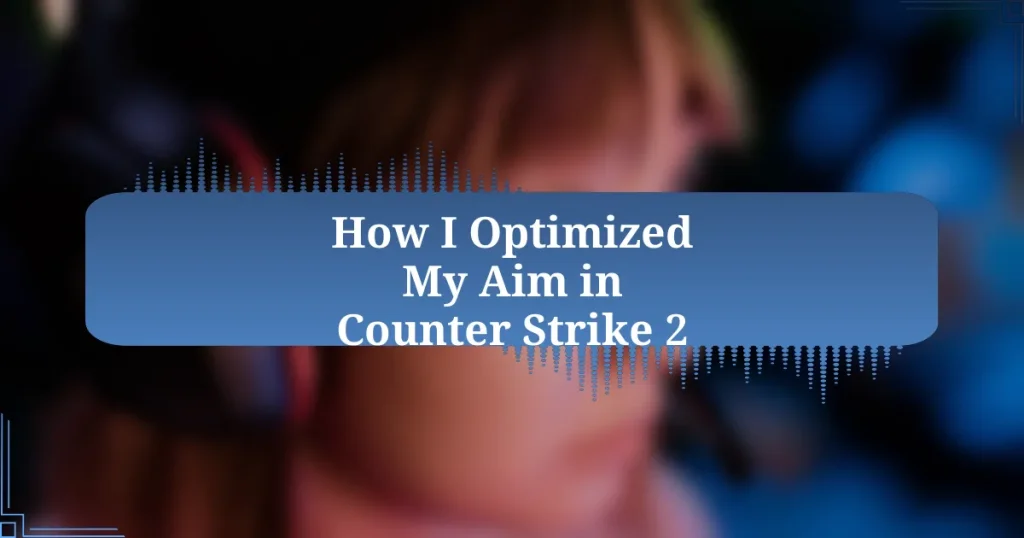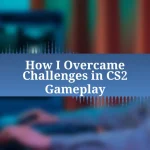Key takeaways:
- Counter Strike 2 features upgraded graphics, refined mechanics, and new map designs that enhance teamwork and strategy.
- Aiming mechanics are crucial; factors include movement control, crosshair placement, and sensitivity settings to improve accuracy.
- Practicing with aim trainers and incorporating warm-up routines significantly enhance reflexes and performance in matches.
- Tracking progress over time helps identify patterns in gameplay, allowing for tailored improvement strategies and boosting confidence.

Introduction to Counter Strike 2
Counter Strike 2 is more than just a sequel; it’s an evolution of a beloved franchise that has shaped competitive gaming for decades. I still remember the first time I engaged in a match – the adrenaline was palpable, and each round felt like a mental chess game. Have you ever felt the same rush when you nail a headshot after what feels like an eternity of practice?
With upgraded graphics and refined mechanics, Counter Strike 2 aims to enhance the experiences we cherished while addressing some of the longstanding issues players faced in previous versions. I found myself captivated by the new map designs, each crafted to encourage teamwork and strategy. Aren’t those moments when you coordinate with teammates to pull off a perfect strategy some of the best in gaming?
Not only has the gameplay evolved, but the community has also grown, bringing in fresh players and seasoned veterans alike. The excitement of competing against diverse skill levels can be both thrilling and intimidating. Do you remember your first encounter with a player who seemed unbeatable? It’s this blend of nostalgia and innovation that makes Counter Strike 2 a must-try for anyone who loves tactical shooters.
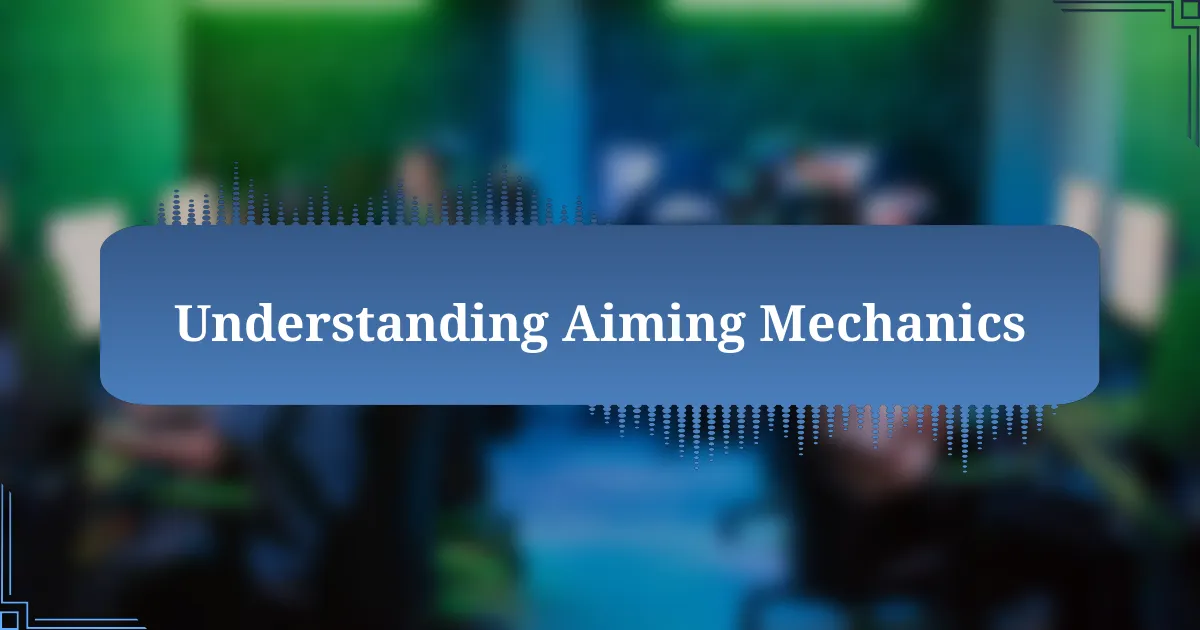
Understanding Aiming Mechanics
Understanding the mechanics behind aiming in Counter Strike 2 is essential for improving your skills. When I first started, I realized that aiming isn’t just about precision; it’s also about understanding how your movement affects your shots. Have you noticed that firing while sprinting often leads to missed shots? This was a hard lesson for me, but it sparked my curiosity about how to control my movement to maintain accuracy.
Another key aspect is the importance of crosshair placement. I learned that keeping my crosshair at head level and anticipating enemy positions significantly boosted my kill count. It’s almost like playing a game of prediction – where will they come from? Mastering this simple adjustment was a game-changer for me, completely transforming my approach to each match.
Lastly, sensitivity settings and their impact on muscle memory shouldn’t be overlooked. I spent numerous hours tweaking my mouse sensitivity, and I found that a lower sensitivity allowed for finer control while aiming. It’s fascinating to think about how this choice can completely alter your gameplay experience. Have you also struggled to find the right balance? It’s a journey that will pay off in the long run, making every encounter feel more manageable.
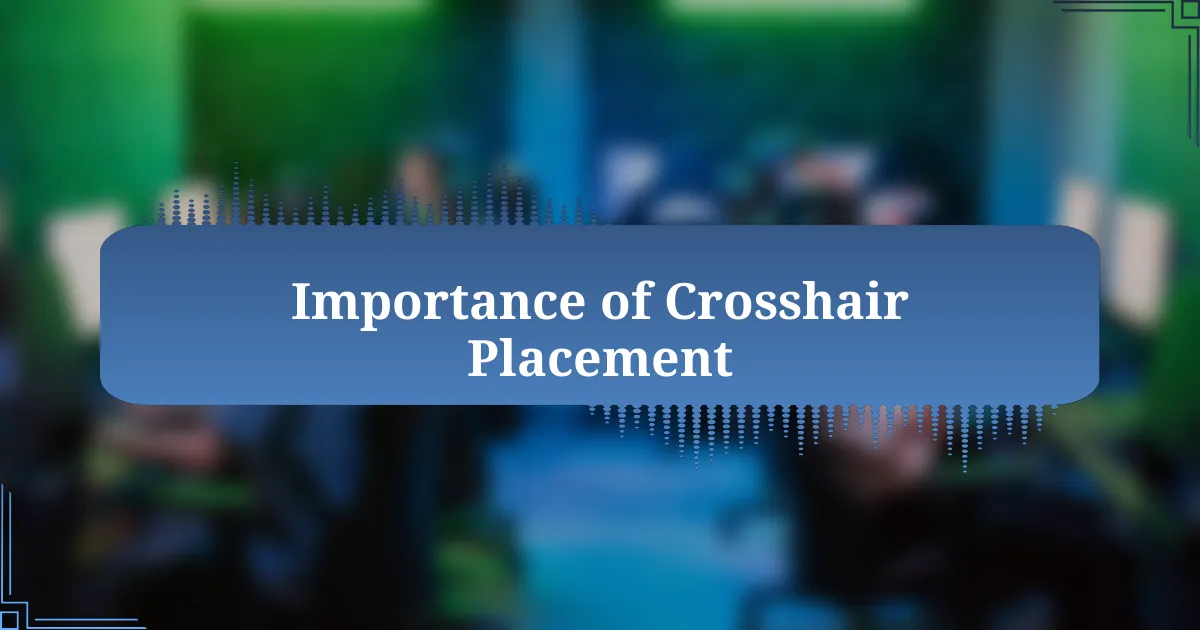
Importance of Crosshair Placement
Crosshair placement is a foundational skill that can define your performance in matches. I remember the countless rounds I lost simply because my crosshair wasn’t positioned right. Holding my crosshair at head level drastically changed the number of headshots I landed. It’s amazing how such a small adjustment can lead to explosive improvements in your kill ratio.
I’ve often found myself in situations where anticipation makes all the difference. When I started waiting at corners with my crosshair pre-aimed at expected enemy paths, my reaction time improved dramatically. It was almost as if I could read my opponents’ movements. Have you ever experienced that little thrill when you score a quick takedown because you were ready? That feeling is electrifying and speaks volumes about how crucial crosshair placement is in gameplay.
Moreover, I’ve come to realize that effective crosshair placement is also about confidence. There were times when I hesitated or panicked, and my aim would suffer. But when I positioned my crosshair correctly, I felt more in control, almost as if I was dictating the flow of the game. It’s a unique empowerment that stems from mastering this fundamental skill, allowing you to capitalize on every opportunity that comes your way.

Adjusting Sensitivity Settings
Adjusting sensitivity settings is one of the most personal aspects of improving your aim in Counter-Strike 2. When I first started tweaking my sensitivity, it felt like trying to find the perfect pair of shoes; too tight, and I couldn’t move, too loose, and I lost control. I settled on a sensitivity that allowed me to make precise adjustments without feeling sluggish, and it transformed my gameplay. Have you ever felt the frustration of overshooting your target? Finding the right sensitivity might just eliminate that feeling.
I often recommend starting with a low sensitivity to enhance accuracy. When I made this switch, it felt liberating to take my time with each shot, as if I were painting a masterpiece rather than rushing through it. This change took some getting used to, but the rewards were undeniable. With more control over my movements, my aim improved, and I began landing those difficult headshots with ease.
Another crucial aspect to consider is the surface you’re using. I remember testing it out—switching from a hard mousepad to a cloth one made a noticeable difference in how my mouse moved. It’s fascinating how even small changes impact your overall performance. Have you considered how your equipment influences your settings? It’s worth experimenting until you strike that perfect balance that feels just right for you.
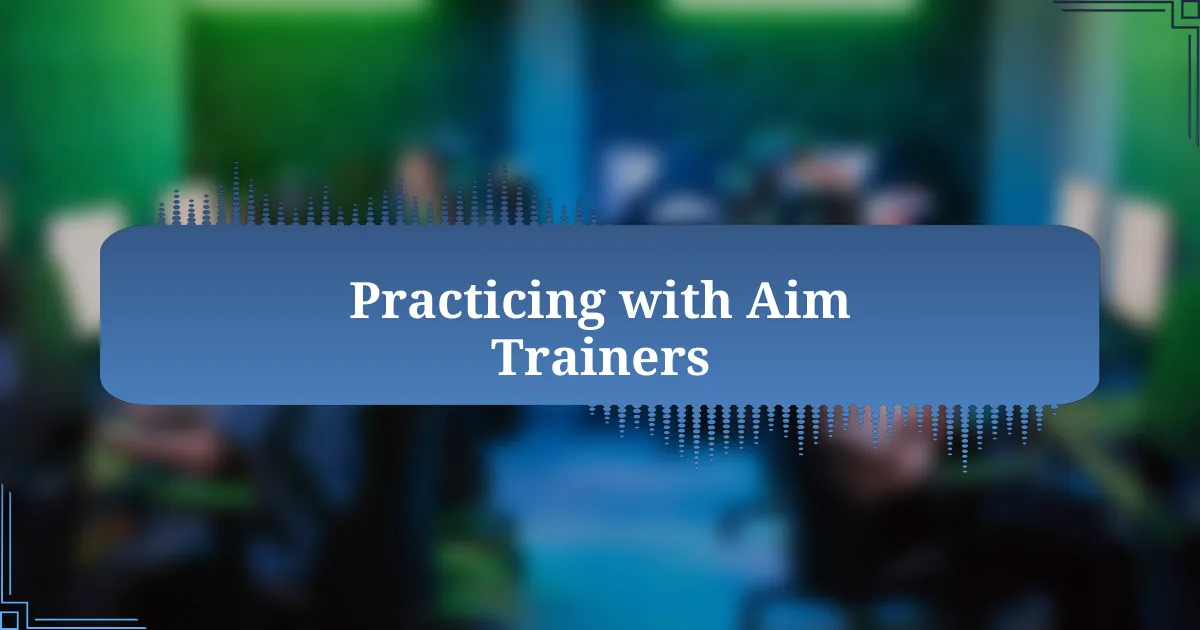
Practicing with Aim Trainers
Practicing with aim trainers has been a game changer for me. I remember dedicating sessions specifically to aim training, and it quickly became an integral part of my routine. Each time I logged onto aim training software, I felt that rush of excitement—not just for improvement but for mastering my reflexes and honing my accuracy.
One of the features I found particularly beneficial was the variety of drills available. I often gravitate towards the flicking and tracking exercises, as they push my limits and deepen my understanding of mouse movement dynamics. Have you ever noticed how just a few minutes of focused training can make your hand feel more responsive? The way my aim stabilized in matches after these sessions was truly rewarding; it was as if I had unlocked a new level of skill.
Selecting the right aim trainer can also influence your progress significantly. I once switched between several programs before settling on the one that resonated most with my learning style. Reflecting on that experience, I realized how important it is to find a training tool that not only challenges you but also keeps you engaged. Have you explored what different aim trainers offer? The right fit can transform your practice sessions from mundane to exciting, making all the difference in your performance on the battlefield.
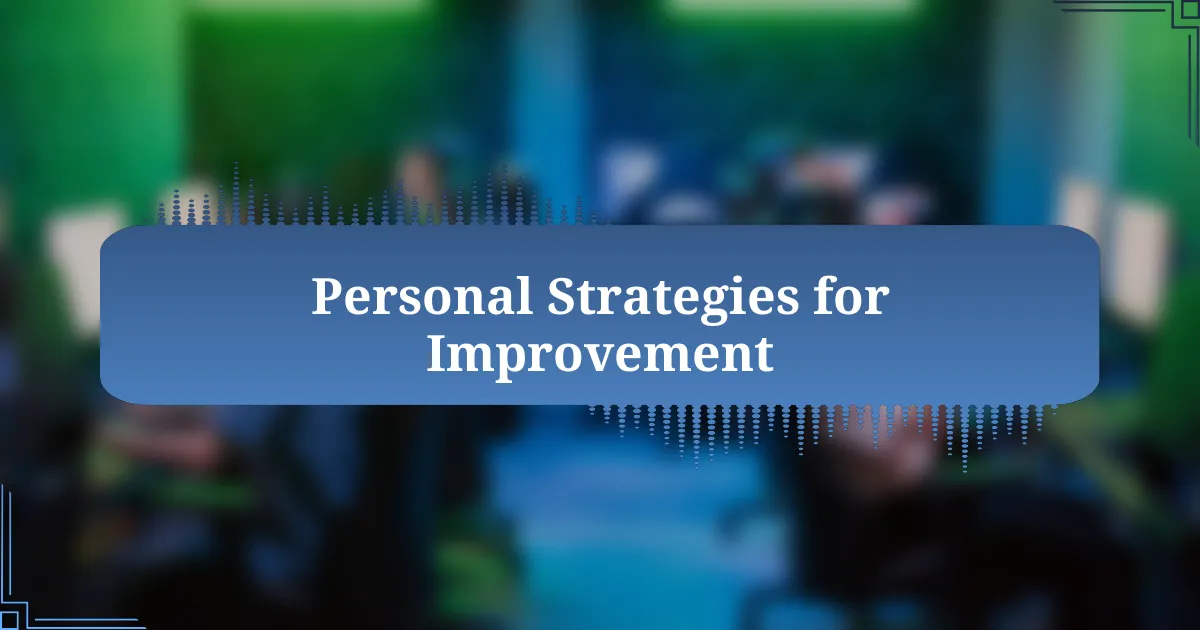
Personal Strategies for Improvement
Incorporating warm-up routines before diving into matches has been essential for my improvement. I’ve developed a habit of spending a few minutes running aim drills to get my muscles ready. It’s surprising how these short sessions not only improve my focus but also help ease the tension that can creep in before a competitive game. Have you ever felt jitters just before a match? There’s something so grounding about warming up that settles my mind.
Another strategy that worked wonders for me was breaking down my gameplay even further. After every session, I began to review my performance, focusing on my aim-related mistakes. This reflective practice allowed me to identify patterns—like how I often pulled my shots when under pressure. Has analyzing your gameplay changed your outlook on improvement? I’ve found that recognizing these moments helps me apply corrective measures in future matches, ultimately boosting my confidence.
Finally, I can’t stress enough the importance of mental conditioning. I started incorporating visualization techniques into my practice, imagining successful shots and perfect movements. The power of visualizing success cannot be underestimated. Have you tried picturing your shots before taking them? Each time I implement this technique, I feel more attuned to my performance, as if I’ve prepped my mind for the battle ahead. In this way, focusing not only on technical skills but also on mental imagery helped elevate my overall aiming ability.
![]()
Tracking Progress Over Time
Tracking my progress over time has been a game-changer in my journey with aiming in Counter-Strike 2. I started keeping a detailed log of my performance metrics, noting down not only my accuracy percentages but also my feelings before and after each game. This practice has illuminated trends in my gameplay that I might have missed otherwise. Have you ever considered how your emotions impact your aim? Reflecting on my emotions alongside my stats has given me a deeper understanding of when I perform best.
After a few weeks of tracking, I began to notice a clear pattern emerge. On days when I practiced consistently and felt relaxed, my accuracy skyrocketed. Conversely, stressful days often led to shaky hands and missed shots. This realization prompted me to adjust my practice schedules based on my overall well-being. Isn’t it fascinating how mental clarity can influence your physical performance? By correlating my emotional state with gameplay data, I’ve been able to tailor my training to maximize improvement.
I also started sharing my progress with friends and teammates, which added a layer of accountability to my journey. Celebrating small milestones—like hitting a new personal best in accuracy—became a motivational boost. The camaraderie in discussing our ups and downs not only made the process enjoyable but also enriched my learning experience. Have you ever felt that sense of community can elevate your gameplay? Sharing my journey has not only kept me motivated but also reminded me that improvement is often a shared path.











